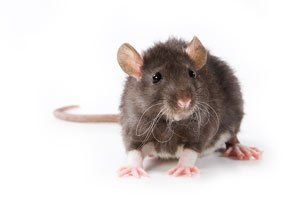
Bees are best known for pollinating flowers and for their ability to sting. However, the world of bees is so much more complex than that description suggests. There are about 20,000 recognized species of bees, and bees have been found on all continents except Antarctica.
Thankfully, there are only a few types you may see in your yard on a regular basis. It's important to know the differences between them so you can act appropriately according to the type of bee you see.
Honey Bees
There are actually seven species of honey bee, but all are very similar. These bees create elaborate hives in structures like hollow trees and rock crevices, and they live in large and intricately structured social groups called colonies. Honey bees are about 1/2 inch long with smooth black heads and bodies that feature alternating bands of black and amber.
Honey bees are very gentle and will not sting unless aggressively provoked. They do die when they sting a victim, and stinging requires that they leave behind their stinger and venom sac.
It is actually a good thing if you see the occasional honey bee in your yard, as these important pollinators are declining in number. If honey bees have built a hive in an inconvenient space on your property, your best bet is to have a bee specialist relocate the hive rather than having them exterminate these endangered insects.
Bumble Bees
Bumble bees are fuzzy-looking bees that are named after the buzzing noise they make while flying. They can measure up to one inch in length when mature. Bumble bees are usually black with yellow markings, and while the top surfaces of their bodies are hairy, the undersides are smooth.
Bumble bees are not normally aggressive, but they can sting when threatened - and, unlike honey bees, they do not die after stinging. While bumble bees are beneficial insects because they pollinate plants, they often build nests in spaces like sheds, wood piles and fences. Pest control experts can use insecticides to kill all bees in a nest and then remove the nest once it is free of bees.
You can make your yard less attractive to bumble bees by filling any holes in your sheds' exteriors. Keep all fences in good repair, and do not leave piles of leaves or grass clippings sitting around for more than a few days.
Carpenter Bees
Carpenter bees are large, furry bees that appear similar to bumble bees. However, unlike bumble bees, carpenter bees have hair on the undersides of their abdomens as well as on the top. They also lack yellow stripes - their bodies are amber brown and their legs and head are black.
Carpenter bees rarely sting, but because they burrow large holes into wooden structures in order to lay their eggs, they can cause serious structural damage to buildings and fences.
Carpenter bees are solitary insects; they do not live in colonies. However, even a single bee can do serious damage, so it's important to have a pest control expert come eradicate the bees as soon as you spot one. Fill in the holes left in wooden structures to keep these bees from coming back.
Mason Bees
Mason bees are small, fuzzy bees with black heads, amber hairs on their midsection and red-brown back ends. They are named for their tendency to build tunnels and nests in mortar. Like carpenter bees, mason bees are solitary insects - each builds its own nest.
Mason bees are very gentle and don't typically sting. They are important pollinators, so you should not worry if you see one buzzing around your flowers or vegetables. However, these bees can cause damage to brick structures, so you should call a pest control company if you think one is nesting in your mortar.
Seeing the occasional bee of any type is not a cause for concern. But if you think bees are nesting on your property, give the experts at Pest Control Services, Inc. , a call to take care of the problem.

Finding cockroaches in your home can make your stomach drop. These pests are known to spread disease and aggravate allergies. Also, once they've moved in, they're not easy to get rid of. It's a lot easier to keep cockroaches out of your home than to deal with an active infestation. If you're making any of the mistakes or engaging in any of the habits below, you're inviting cockroaches into your home. Make changes quickly to keep the bugs away.
1. Leaving Dirty Dishes in the Sink
Cockroaches are not picky when it comes to food. They will gladly eat anything from grains to meat, so any debris left on your dirty dishes is likely to attract them. Though it can be tempting to leave the dinner dishes in the sink and deal with them in the morning, washing them immediately after your meal is your best bet for bug prevention.
If you have a dishwasher, get into the habit of running it each night rather than just when it gets full. Cockroaches can easily sneak into a dishwasher through a loose gasket.
2. Storing Food in Its Original Packaging
Cockroaches can chew through cardboard and thin plastic. Instead of keeping cereal, crackers, and other items in their original containers, transfer them to tightly sealed plastic or glass storage containers when you get home from the store.
3. Allowing Kids to Eat Outside of the Kitchen
When you allow your kids to meander through the home as they snack on crackers or a sandwich, they often drop crumbs that accumulate in the carpet and later attract cockroaches. Encourage your kids to eat in the kitchen or dining room where you can easily spot and clean up any crumbs or messes they leave behind.
4. Ignoring a Leaky Water Pipe
Cockroaches need water and are attracted to sources of moisture like leaky pipes. If one or your drains or pipes has been dripping, don't just catch the water in the pail and hope for the best. Call the plumber out to fix the pipe as soon as possible before you also have to make a call to the exterminator.
5. Keeping Your Home Too Warm and Humid
Many homeowners turn their thermostats way up when they're not at home in an attempt to save on energy costs. However, the drawback of this measure is that cockroaches are more attracted to hot, humid spaces. Your air conditioner not only cools your home, but also removes humidity from the air. Keeping your home at a comfortable 74 or 76 degrees F will effectively keep the bugs at bay.
If your home still feels moist and humid when the air conditioner is running, consider having a dehumidifier installed. This appliance removes excess moisture from the air, making traditionally moist areas like your attic and basement less inviting to cockroaches or even termites. If it's just your basement that seems moist, setting up a portable dehumidifier in this space can go a long way towards drying it out.
6. Leaving Pet Food Out
Cockroaches love dog and cat food. If you have a dog or cat, do not just leave food out for them to help themselves throughout the day. Instead, feed your pet twice a day, and pick the food up when they're finished eating. Store your pet food in a sealed plastic or glass container rather than the box or bag it comes in. If your dog or cat spills food on the floor, wipe it up promptly so it does not attract pests.
If you avoid the mistakes and habits above, you'll reduce the risk of having cockroaches invade your home. If you do notice signs of cockroaches, contact Pest Control Services, Inc. The sooner we are able to address the problem, the easier we will be able to rid your home of these pesky insects.

Mosquitoes are more than just an annoyance. Experts have called them "the most dangerous animal in the world" due to the way they spread diseases like malaria, zika virus, and yellow fever. There's no doubt about it: having mosquitoes in your yard is a dangerous situation. Thankfully, there are four steps you can take to keep them away.
1. Eliminate Standing Water
Mosquitoes breed in standing, stagnant water, such as that found in puddles, bird baths, and shallow ponds. Eliminating any standing water on your property will help ensure they do not breed there, which should reduce the number of mosquitoes on your property dramatically.
If you have any low spots that frequently fill up with water, hire a landscaping team to fill them in or install a drainage system. If you have bird baths, change the water inside of them weekly. Keep lids on your trash cans, and do not keep open jugs, watering cans, or tires in your yard as these can collect water.
If you have a pond, keeping it mosquito-free will require some attention to detail. Remove any trees, weeds, or obstructions that may shelter the pond from the wind, as increased airflow across the pond will make it less appealing to mosquitoes. You can also try adding goldfish or koi to your pond; they eat mosquito larvae before the larvae have a chance to develop into adult mosquitoes.
2. Keep Your Pool Clean
Mosquitoes will not breed in a clean, chlorinated pool, so if you have a pool, be very careful to keep it clean. Check your chlorine and pH levels twice a week. Maintain the chlorine level between 1.0 and 3.0 ppm and the pH between 7.4 and 7.6. Empty the skimmer baskets often so that the organic debris they collect does not attract mosquitoes.
If you have a pool cover, make sure you do not allow it to accumulate standing puddles of water. If puddles do collect, such as after a storm, drain them promptly before they begin attracting mosquitoes.
3. Clean Your Roof and Gutters
Dirty gutters are a popular harboring point for mosquitoes. If you have a flat roof, they may also breed in water that puddles on the roof. Clean out your gutters twice a year to make sure they are flowing freely. This is easier than you might imagine. You simply climb onto a ladder and use your gloved hand to pull any leaves and debris from the gutters. Pour a bucket of water down the gutters after cleaning to make sure they're clear.
If you notice water pooling on your flat roof, have your roofing contractor come out and adjust the pitch of the roof--or fill in the low spot--to prevent future puddles from forming.
4. Have Yard Sprayers Installed
Even if you take care to prevent mosquitoes from breeding on your land, they may still breed on nearby property and visit your yard, biting you when you spend time outside. Installing sprayers to periodically spray the perimeter of your yard with insecticides will help keep them away.
Mosquito sprayers are typically installed every 10 to 15 feet along the edge of your property. The system releases a fine mist of insecticides twice a day--at dusk and dawn. The pesticides settle on the plants along the border of your lawn, and when mosquitoes land on these plants, they are killed. If you have a party in your backyard, you can give your yard an extra misting prior to the event to ensure mosquitoes stay away.
With the steps above, you can maintain your yard as a mosquito-free haven. Pest Control Services, Inc.
offers mosquito spraying services to customers in the Corpus Christi area. Contact us to learn more or to schedule your installation appointment.

Cockroaches are some of the world’s most resilient pests. While there are several types of these creatures, there are common signs of their presence.
Roaches You Can See During the Day
Roaches are nocturnal. If they are visible and active during the day you have a larger infestation on your hands because the ones you are seeing are being pushed out of their nests by additional bugs.
Visible Droppings
Cockroach droppings are like black pepper or coffee grounds of various sizes depending on the size of the bugs. No matter the size or type of cockroach, these features of their leavings will remain the same. If you see these around your home with no other explanation, it is definitely a sign of an infestation.
Egg Casings or Foul Odor
Egg casings popping up around your home are a sure sign of bugs. If you find this, they are breeding inside your home, ensuring that the problem has grown.
All of these signs may also be accompanied by a particular musky odor. If you are unsure what the smell is from but it is accompanied by any of these other signs it is likely to be derived from these insects.
Seeking assistance with this problem is a wise choice. Call
Pest Control Services, Inc. in Corpus Christi for more information on finding a qualified professional for cockroach removal.








